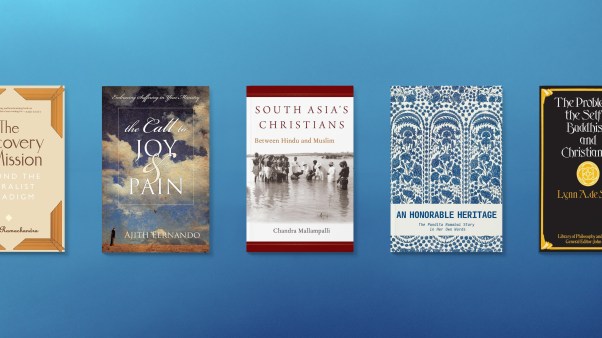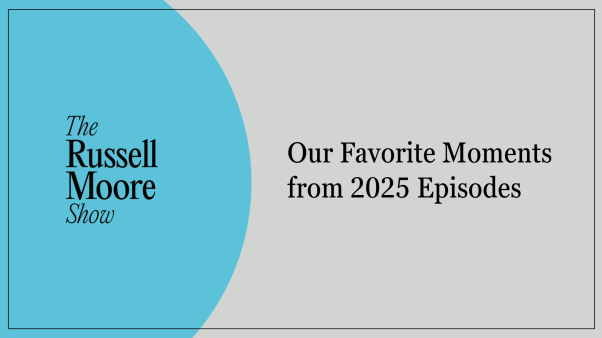More of a good thing is not necessarily better. And what starts as a good thing may not stay that way.
This is a lesson we’ve had to learn and relearn in recent years while living through rapid shifts in digital communication technologies. It’s vertigo-inducing how a given tool or platform can have one effect in its infancy and an opposite one in its maturity.
But perhaps it shouldn’t be surprising: Scale and proportion matter. Our bodies need some salt, for example, but too much salt will make us ill. Communication technologies have a similar effect on the body politic. The same tool that at a low dose can contribute to mutual understanding and consensus can, when adopted on a wider scale, foment confusion and antipathy.
If we want to keep our feet under us amid these disorienting shifts, Christians must learn how to recognize this paradoxical reality and work together to keep such potent technologies in their place. Yet we’ll only be able to do so if our sense of community and belonging flow from the rhythms of our churchly life together. In other words, it’s our very commitment to living as members of Christ’s body that will enable us to serve a techno-addled society and call it to a better way of life.
Nicholas Carr articulates these dynamics well in his latest book, Superbloom: How Technologies of Connection Tear Us Apart. It is a grave mistake, he warns, to assume “that the way a complex technological system works early in its development will be the way it works as it matures.” Yet because “the story we told ourselves about the net, from its earliest days, was a story of ‘democratization,’” many were slow to recognize how easily an abundance of information may foster enmity and mistrust.
Carr’s argument about the effects of too much content pouring through our screens corroborates the insights of the Catholic technology critic Ivan Illich, whom Carr—somewhat strangely—never mentions in Superbloom. In the 1970s, Illich proposed that the application of industrial-style technologies in any given field—education, medicine, transportation, communication, and so on—would be marked by two watersheds.
“At first,” Illich explained, “new knowledge is applied to the solution of a clearly stated problem, and scientific measuring sticks are applied to account for the new efficiency.” Such success generates great optimism, and these early improvements are used to justify “the exploitation of society as a whole in the service of” some too-simple metric, like content produced and disseminated. After this second watershed has been crossed, chasing further technological efficiencies fails to improve the situation and often causes new problems instead.
An example from an earlier era—the era which coined terms such as consensus, brain rot, and even, as Carr notes, social media—can help us to see this progression. The printing press played a key role in unifying the American colonists and orchestrating their rebellion against Britain. As the early American historian David Ramsay famously put it in 1789, “In establishing American independence, the pen and the press had merit equal to that of the sword.” Hence, a few years later, the Philadelphia Typographical Society could declare the press “the tombstone of ignorance and superstition.”
After such a positive experience with the hand-powered printing press, the industrialization of printing in the late 1820s and other new communication technologies, most notably the telegraph, were met with messianic fervor. The first message sent across the Atlantic Ocean in 1858 concluded with a nearly blasphemous connection between the advent of this technology and the advent of Christ: “‘Europe and America are united by telegraph. Glory to God in the highest, on earth peace, good will towards men.”
Such sentiments were common. An earlier essay in Horace Greeley’s New-York Tribune is typical: “The Magnetic Telegraph, which is literally material thought, and flies as swift, absolutely annihilating space and running in advance of time, will be extended to all the great cities in the Union—so that a net-work of nerves of iron wire, strung with lightning, will ramify from the brain, New York, to the distant limbs and members—to the Atlantic seaboard towns, to Pittsburgh, Cincinnati, Louisville, Nashville, St. Louis and New Orleans.”
The result, heralds of this new communication age were sure, would be the spread of truth and enlightenment. The Tribune story treated the telegraph as infallible, a tool to make journalistic “fraud and deception … next to impossible.”
Today it’s hard to believe that anyone seriously thought misinformation and fake news, much less sensational trivia, would be eliminated by the telegraph—but then, it was less than 15 years ago that Twitter was going to spread democracy throughout the Middle East. As I said, rapid technological shifts can induce vertigo.
One of the most notable consequences of the new connections the telegraph and industrial printing wrought is what we’ve come to call consensus: that experience of a common feeling throughout society. Consensus, in fact, is a fairly novel concept. The word first entered the English language in the mid-1800s, referring to a nation or other group of people sharing the same sensations and opinions at the same time.
As consensus develops—as people come to think and feel in unison with a speed and totality only possible through mass communication—the dangers of groupthink become pronounced. Political slogans, memes, and sentimental appeals pulse through these networks and our minds. And when there is an exception to that unity, some dissent that is disagreeable or even disgusting to the majority, the experience feels more intimate and hence more disconcerting.
The most obvious example of that disconcert from the 19th century is the question of slavery. When Northerners read proslavery essays or Southerners encountered abolitionist literature, their deeply divergent sentiments became unignorable. When, in the 1830s, Northern abolitionists blanketed the South with antislavery pamphlets, the result was not persuasion or mutual understanding but riots, bonfires, and calls to censor the mail. Proslavery sentiments only intensified.
Today, when our digital feeds provide constant reminders of what our fellow citizens and even fellow Christians think about immigration or vaccines or gender, the result is usually not deeper understanding but visceral antipathy. The networking technologies that make public consensus possible also make the dissent that persists more apparent and galling.
We tend to focus on the deleterious individual effects of digital communication technologies: Carr’s earlier book The Shallows: What the Internet Is Doing to Our Brains is a classic of this genre. And for individuals, it’s possible to make choices that counteract these effects. When Henry David Thoreau warned his readers that paying attention to sensational news would cause “brain-rot” (a term chosen as the Oxford Word of the Year in 2024), he could recommend changing their informational diet as a remedy.
It’s harder to address the political or cultural problems of an overconnected society, because these require collective action. I may be able to improve my own news habits, but I can’t choose to live in a world without TikTok.
So what is to be done about the studies Carr summarizes in Superbloom that show “false or otherwise misleading stories [are] 70 percent more likely to be retweeted than factual ones”? And that the most educated people, and the ones who follow the news most closely, also have the most distorted understanding of contemporary events? And that when most of us encounter “different points of view” online, we see these “not as opportunities to learn but as provocations to attack”?
As Carr concludes, “Flooding the public square with more information from more sources” does not “open people’s minds or engender more thoughtful discussions.” It doesn’t even “make people better informed.”
What makes the challenge of meaningful change even more difficult is that skepticism of our hyperconnected world is often corrupted or co-opted. Carr gives the particularly ironic example of Frank Walsh, who one night shot a bullet through his family’s TV—only to find himself an overnight news sensation. The next week, he won a new TV on a reality TV show.
We have become accustomed to the phenomenon of “politicians [who] go on social media to express their disdain for social media, [and] then eye the like count.” At the societal scale, is that really the best we can do?
Carr concludes Superbloom by proposing we look for ways to turn aside and form alternative communities on the edges of these digital networks. “Maybe salvation, if that’s not too strong a word, lies in personal, willful acts of excommunication,” he writes, in “the taking up of positions, first as individuals and then, perhaps, together, not outside of society but at society’s margin, not beyond the reach of the informational flow but beyond the reach of its liquefying force.”
He’s right, but it’s the togetherness aspect of this response that is particularly vital, for communication technologies by their very nature pose challenges that demand cooperative responses. What Carr does not say is that communities and even institutions already exist, all over our country, that are uniquely equipped to rise to this challenge: Christian families, schools, and churches.
We should be taking the lead in embodying alternative ways of communicating and feeling together. We need to practice developing a different kind of consensus, the consensus of members of the church conforming to the mind of Christ (Rom. 12:2; 1 Cor. 2:16), not members of an increasingly secularized society oriented around New York and Silicon Valley. This type of consensus is the stability we need to avoid fresh waves of vertigo as dramatic technological development, particularly around artificial intelligence, continues apace.
Communal action at the scale of a church or Christian institution can take many forms. We might begin with something like screen-free church services. Families and small groups can host discussions of books like Andy Crouch’s Tech-Wise Family and create their versions of the Postman Pledge. Students can start Luddite clubs. Christian schools can take a cue from the Bruderhof communities and workshops that subordinate technologies to shared commitments.
We can both observe and offer examples that testify to the possibility of distinctly Christian consensus even in this digitally networked age. It is still possible for Christians to think and feel according to our membership in an alternative community. It is still possible for our consistently shared life of Scripture, communion, and prayer to form in us a consensus tied not to some mass public but to the body of Christ.
Jeffrey Bilbro is associate professor of English at Grove City College and editor in chief at the Front Porch Republic. His most recent book is Words for Conviviality: Media Technologies and Practices of Hope.
























